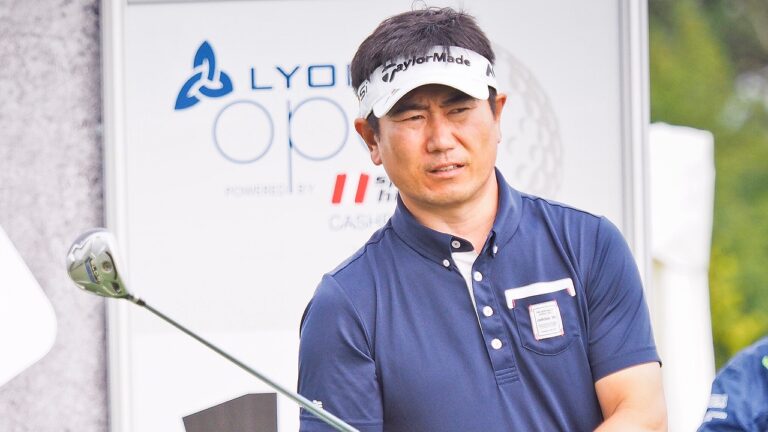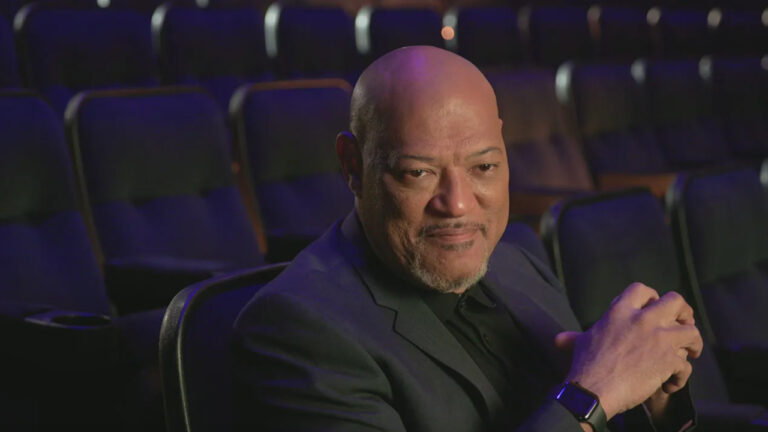The Best ‘Avatar: The Last Airbender’ Episodes Ranked
On February 21, 2005, Nickelodeon debuted a brand-new animated series that would become one of the network’s most beloved properties in the 21st century: Avatar: The Last Airbender.
Though the show ran for three seasons, its engaging plot, complex themes, strong characters, and gorgeous anime-style animation earned the series critical acclaim during its initial run and in retrospective reviews. Such is the acclaim of Avatar that it became a franchise, with a similarly acclaimed sequel series and two different live-action adaptations.
We revisited this perennial series and ranked the best Avatar: The Last Airbender episodes to better understand why this series has resonated for so many and continues to earn fans nearly twenty years after its debut.
1. “The Deserter”

Throughout Book 1, anyone affiliated with the Fire Nation gets painted as a wicked villain, harassing innocent people and gradually taking over the Earth Kingdom towns Aang, Katara, and Sokka visit. In “The Deserter,” audiences finally meet their first non-adversarial Fire Nation soldier, a firebending master called Jeong Jeong.
Aang’s first attempt at learning to firebend showcases how volatile and destructive the bending form can become in the hands of a novice but strives to show that not everyone who hails from the Fire Nation shares the Fire Lord’s goals for conquest. As an early glimpse into ordinary Fire Nation life, “The Deserter” helps foreshadow Avatar: The Last Airbender episodes.
2. “Avatar Day”

In this riff on a classic detective story, Aang, Katara, and Sokka arrive in a village in time for its annual Avatar Day celebration, only to discover the festivities denounce the Avatar for a previous incarnation’s supposed murder of their beloved leader.
With Aang under arrest, Katara and Sokka step up to try to solve the case, calling back to the previous season’s “The Warriors of Kyoshi” to prove the Avatar’s innocence. The episode provides a fun diversion while delving into the history of a previous Avatar and how their actions in the past continue to resonate well into the present.
3. “Winter Solstice, Part 1: The Spirit World”

The world created for Avatar truly comes into focus in the two-parter “Winter Solstice,” with its first half giving a compelling first taste of the show’s wider spiritual mythology.
After a vengeful forest spirit plaguing a village kidnaps Sokka and flees with him into the spirit world, Aang finds himself trapped in that plane, unable to bend and struggling to escape himself. Audiences begin to discover the delicate balance between man and spirit, bringing reminders of Hayao Miyazaki’s Princess Mononoke and starting a conflict that goes beyond Avatar: The Last Airbender and into The Legend of Korra.
4. “The Drill”

The Fire Nation constantly proves itself as the most technologically advanced of Avatar’s Four Nations, and no episode demonstrates its technical mastery quite like “The Drill.” The imposing machine that threatens to punch through Ba Sing Se’s outermost wall and the gravity of the situation requires all of Team Avatar’s skills to destroy it, with each member of the group shining in their efforts.
Aang and Azula’s fight atop the outside of the machine and the intricate detail of the drill’s inner workings make for a visually spectacular episode, especially regarding Aang’s epic coup de grace to the drill itself.
5. “Bato of the Water Tribe”

Water Tribe culture doesn’t entirely dominate Book 1, despite what the sub-title would lead the audience to believe. Still, Sokka and Katara’s roots dominate “Bato of the Water Tribe” with the arrival of its title character. A close family friend and a comrade of their father, Bato acts as a living reminder of the Southern Water Tribe and the family life that the siblings lost as a result of the war.
Yet Aang, considering Sokka and Katara the closest people he has to family, fears them leaving him behind and inadvertently betrays the pair. The result is an episode that tests the bonds between the show’s original trio and how much they each mean to one another, with some help from Zuko and a fierce bounty hunter.
6. “The Western Air Temple”

No matter what careful plan Sokka cooks up, audiences know that Aang would always need a firebending teacher to help him master the final element before facing off against the Fire Lord. Still, they probably never expected Zuko to fill that role, at least at the beginning of the series.
In “The Western Air Temple,” all the old wounds from Zuko’s former villainy come home to roost, with resentment from the original trio threatening to derail Zuko’s hopes to redeem himself. Seeing how Zuko repeatedly falters to prove himself, from awkward introductions to a final, fatal encounter with the Combustion Man, shows how different the prince has become from the initial vengeful young man at the beginning of the series and how far he’s come.
7. “City of Walls and Secrets”

Despite Ba Sing Se being conveyed to the audience as the last bastion of hope in the entire Earth Kingdom after Omashu’s fall, “City of Walls and Secrets” proves that the Fire Nation may be the least of Aang and the gang’s worries. Clancy Brown joins the series as the sinister Long Feng, an advisor who manipulates his position to control the city in a fittingly Orwellian fashion.
As the leader of an Earth Kingdom secret police known as the Dai Li, Long Feng proves himself a worthy foe against the show’s young heroes, taking advantage of the city’s bureaucracy and vast resources to undermine them at every turn. His debut episode is a fitting introduction as one of Avatar’s most memorable foes, one who can’t be outfought nor outwitted so easily.
8. “The Chase”

Though they had a brief clash with the show’s heroes in “Return to Omashu,” Azula, Ty Lee, and Mai truly showcase how formidable they are as fighters in this fittingly titled chase episode. Assisted by a train-like Fire Nation vehicle, Azula and her friends prove relentless and deprive Aang and his companions of any relief. The countless sleepless nights, anxiety, and tension among the four leads culminate in Toph taking her leave, only to have an insightful chance encounter with Iroh.
The three-way fight between Zuko, Aang, and Azula also foreshadows not only the season 2 finale but the future dynamics of Book 3.
9. “The Day of Black Sun Part 2: The Eclipse”

If “Part 1: The Invasion” represents the highs of what the show’s heroes are capable of, “Part 2: The Eclipse” demonstrates how quickly careful planning and strategy can become upended by a wrench in the machine. Audiences were previously aware that Azula knew of Sokka’s invasion plan in Book 2, but the full scale of how she tears the plan apart is a true testament to her villainy.
Yet, out of the failure of Black Sun, Zuko finally embraces his better angels, denounces his father over his cruel actions, and resolves to join Aang to take him down. Though the final showdown wouldn’t occur in this episode, “Part 2: The Eclipse” lays the groundwork for a new path for Zuko and his final transformation into a true hero.
10. “The Waterbending Scroll”

Book 1 emphasizes Aang’s necessity to learn waterbending, but the season equally depicts Katara’s struggles to prove herself a waterbender on her own terms. In “The Waterbending Scroll,” Katara’s frustrations come to the forefront as Aang proves himself to be natural at her element, and her desire to learn proper technique drives her to steal a scroll of waterbending forms from a gang of pirates.
Not only does the episode act as a fun pirate-themed adventure, complete with the obligatory parrot, but it also serves as a showcase for Katara gradually coming into her own as a team member.
11. “The Firebending Masters”

Firebending, up until this point, stood out as the ‘bad’ element, one whose destructive capability has been emphasized in the Fire Nation’s zeal for warfare. Yet “The Firebending Masters” proves that the opposite is true: that fire is as much a colorful, life-giving energy as a force capable of grand fury.
Aang and Zuko’s journey to discover the true origins of firebending to center their bending style also helps serve as a fun Indiana Jones riff, complete with ancient civilizations. However, the true standout of the episode is a gorgeous dance among dragons and a euphoric explosion of fire and color.
12. “The Waterbending Master”

Throughout Book 1, Katara shows a natural talent for waterbending but desperately needs a teacher to help refine her into a true master. One would think her troubles would finally end when the group reached the Northern Water Tribe.
However, upon discovering the tribe’s patriarchal system forbids women from learning to waterbend, Katara refuses to let her dreams of becoming a master die. Her resulting fight with Master Pakku shows how far Katara has come throughout the season and makes for a beautiful showcase of fluid waterbending animation. However, the episode also serves as a major status quo shift for Zuko, setting the stage for an epic season finale.
13. “The Avatar and the Fire Lord”

A fittingly tragic tale, “The Avatar and the Fire Lord,” finally tells the origins of the series’ 100-Year War, depicting the events that led to the fatal falling out between Avatar Roku and his former best friend, Fire Lord Sozin. A guest appearance from actor Ron Perlman as Sozin masterfully shows the past Fire Lord’s growing ambitions beginning to rot away at his soul, with a performance that has audiences hope Sozin sees the error of his ways but watch knowing the inevitable.
The episode also provides a rationale for Zuko’s inner turmoil and the battle between the good and evil in his soul that weighs heavily on his actions, culminating in his choices in “The Day of Black Sun.”
14. “The Blind Bandit”

When Book 2 began to hit its stride, audiences were used to the dynamics between Aang, Katara, and Sokka for over twenty episodes. When it comes time to introduce Aang’s earthbending teacher, “The Blind Bandit” doesn’t disappoint.
Toph Beifong, a young blind girl and scion of a local wealthy family who happens to be an earthbending prodigy, uses her bending as a radar to “see” the world around her and overwhelm her opponents. A brash loudmouth, Toph became an instant breath of fresh air for the group and stood in sharp contrast to the more reserved Katara. Her ending battle against her former underground fighting rivals still stands out as her best fight sequence, and no doubt played a small part in her quickly becoming a fan-favorite of the series.
15. “The Puppetmaster”

The closest Avatar ever came to a straight horror-themed episode, “The Puppetmaster” focuses on an old, vengeful waterbender taking her revenge on Fire Nation civilians as payback for her wartime imprisonment. Her sickening bloodbending technique still terrifies audiences, manipulating the water in a person’s body to control their actions, and it’s up to a reluctant Katara to stop her from hurting anyone else.
The dark atmosphere and moody music fit the sinister undertones of the episode, especially during the fight between Katara and the puppetmaster.
16. “The Desert”

In the aftermath of Appa’s capture at the end of “The Library,” Aang and his companions find themselves stranded in the desert with little hope of escaping alive, all while the young airbender stews in rage over the fate of his beloved bison. When this episode first aired alongside “The Library,” the two episodes were marketed as “The Fury of Aang,” and that package title fits the underlying current beneath “The Desert.”
Though they had witnessed the occasional outburst or two, audiences had not seen Aang in such a dark mental space. Watching him go through the stages of grief makes for a compelling bottle episode, especially in its melancholy ending.
17. “The Siege of the North: Part 2”

As fitting an epic season finale as there was, “The Siege of the North: Part 2” cleverly wraps up its Book 1 storyline while laying the groundwork for what would come in Book 2. While “Part 1” offers a truly stunning set-piece fight between Zuko and a newly-refined Katara, “Part 2” sees a long-awaited rematch between Zhao and Zuko as well as demonstrating the balance between man and spirits hinted at in “The Winter Solstice.”
Resoundingly triumphant but with just a dash of tragedy, the episode set the bar for how to cap off a season of storytelling and set high expectations for future Avatar: The Last Airbender episodes.
18. “Zuko Alone”

Of the many character-focused episodes of Avatar, none delve into the psychology of its lead quite like “Zuko Alone.” In a spin on classic Western genre tropes, Zuko finds himself in an Earth Kingdom desert town run by criminal Earth Kingdom soldiers. Through his relationship with a young local boy and his family, the hardened heart of the banished prince begins to open up as he reflects on his youth, memories of his mother Ursa prevalent in his mind as the only one who truly cared for him.
As an emotional turning point for Zuko, the audience sees the prince in a new light, away from the vengeful Avatar hunter of Book 1 and into someone who may yet become a hero himself.
19. “The Blue Spirit”

Part epic prison break and a quasi-Batman story, “The Blue Spirit’ stands out as a thrilling action-centric episode while providing the first hint that Zuko may possess more redeeming qualities than audiences previously suspected. When Katara and Sokka grow deathly ill after the events of the previous episode, Aang races to find the siblings medicine only to find himself captured by the newly-promoted Admiral Zhao.
Yet, before he can be taken to the Fire Nation, a mysterious masked swordsman dubbed the Blue Spirit infiltrates Zhao’s fortress to free Aang. The resulting escape and surprise twist with the Spirit’s true identity make for a compelling showcase of what Zuko is capable of.
20. “Sozin’s Comet Part 4: Avatar Aang”

Not every television series sticks the landing when wrapping up its storylines or saying goodbye to its cast of characters. “Sozin’s Comet” stands out as one of the best endings to an animated series and one of the best series finales in the televised medium.
Long awaited showdowns, especially the prophesized clash between Aang and the Fire Lord, truly showcase the series’ signature bending battles and how far Aang has grown from the boy in the iceberg audiences meet in the first episode to the fully realized Avatar he becomes. “Sozin’s Comet” makes a fitting farewell to a beloved series and would fuel demands for new adventures in this rich world to come.
21. “The Tales of Ba Sing Se”

Instead of the typical episode structure of a single plot line, “The Tales of Ba Sing Se” followed the cast in small vignettes, detailing an average day for each of them in Ba Sing Se. From Toph and Katara having a girls’ day out, Sokka inadvertently joining a poetry society, and Zuko dating a local girl, “Tales” offered a vast array of stories, each highlighting its lead character while navigating their lives in the Earth Kingdom metropolis.
Yet the standout sequence remains Iroh’s, with one of Avatar’s most touching endings and honoring the character’s original voice actor, Mako, after his tragic passing weeks before the episode aired.
22. “The Storm”

While the series, up to this point, clearly illustrates the high stakes and maturity of its storyline, nothing could prepare audiences for the complex character revelations surrounding both Aang and Zuko in “The Storm.”
Audiences discover how Aang found himself in the iceberg that sealed him away, the final result of the young airbender being denied any semblance of normalcy due to his being the Avatar. Zuko’s origin story is more revelatory: his desire to capture the Avatar and restore his honor stems from speaking out against his father over a plan to sacrifice loyal Fire Nation soldiers.
With the complexities of both boys laid bare for audiences to take in, “The Storm” paints the series lead and his great rival in an entirely new light that resonates throughout the rest of Avatar’s run.





